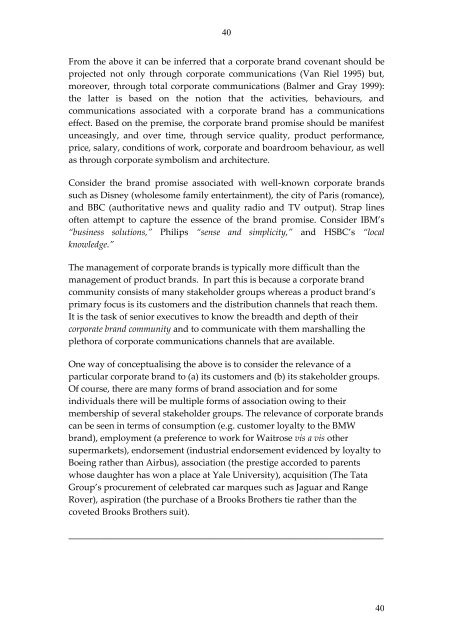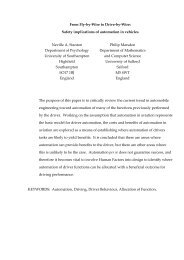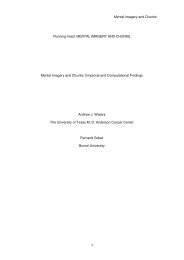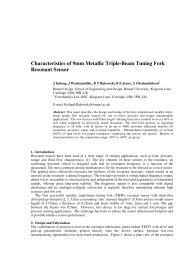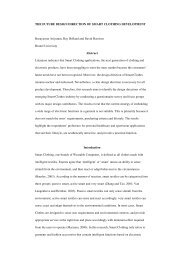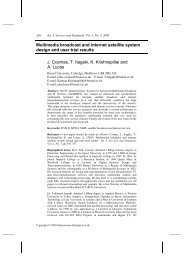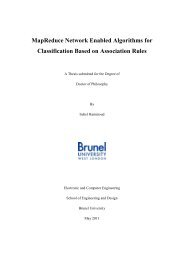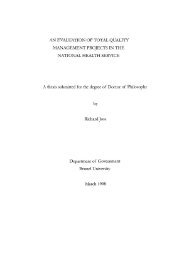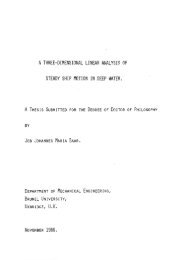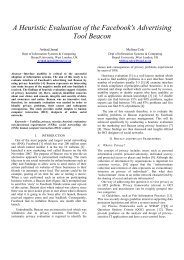insights from the british monarchy - BURA - Brunel University
insights from the british monarchy - BURA - Brunel University
insights from the british monarchy - BURA - Brunel University
You also want an ePaper? Increase the reach of your titles
YUMPU automatically turns print PDFs into web optimized ePapers that Google loves.
40<br />
From <strong>the</strong> above it can be inferred that a corporate brand covenant should be<br />
projected not only through corporate communications (Van Riel 1995) but,<br />
moreover, through total corporate communications (Balmer and Gray 1999):<br />
<strong>the</strong> latter is based on <strong>the</strong> notion that <strong>the</strong> activities, behaviours, and<br />
communications associated with a corporate brand has a communications<br />
effect. Based on <strong>the</strong> premise, <strong>the</strong> corporate brand promise should be manifest<br />
unceasingly, and over time, through service quality, product performance,<br />
price, salary, conditions of work, corporate and boardroom behaviour, as well<br />
as through corporate symbolism and architecture.<br />
Consider <strong>the</strong> brand promise associated with well-known corporate brands<br />
such as Disney (wholesome family entertainment), <strong>the</strong> city of Paris (romance),<br />
and BBC (authoritative news and quality radio and TV output). Strap lines<br />
often attempt to capture <strong>the</strong> essence of <strong>the</strong> brand promise. Consider IBM’s<br />
‚business solutions,‛ Philips ‚sense and simplicity,‛ and HSBC’s ‚local<br />
knowledge.‛<br />
The management of corporate brands is typically more difficult than <strong>the</strong><br />
management of product brands. In part this is because a corporate brand<br />
community consists of many stakeholder groups whereas a product brand’s<br />
primary focus is its customers and <strong>the</strong> distribution channels that reach <strong>the</strong>m.<br />
It is <strong>the</strong> task of senior executives to know <strong>the</strong> breadth and depth of <strong>the</strong>ir<br />
corporate brand community and to communicate with <strong>the</strong>m marshalling <strong>the</strong><br />
plethora of corporate communications channels that are available.<br />
One way of conceptualising <strong>the</strong> above is to consider <strong>the</strong> relevance of a<br />
particular corporate brand to (a) its customers and (b) its stakeholder groups.<br />
Of course, <strong>the</strong>re are many forms of brand association and for some<br />
individuals <strong>the</strong>re will be multiple forms of association owing to <strong>the</strong>ir<br />
membership of several stakeholder groups. The relevance of corporate brands<br />
can be seen in terms of consumption (e.g. customer loyalty to <strong>the</strong> BMW<br />
brand), employment (a preference to work for Waitrose vis a vis o<strong>the</strong>r<br />
supermarkets), endorsement (industrial endorsement evidenced by loyalty to<br />
Boeing ra<strong>the</strong>r than Airbus), association (<strong>the</strong> prestige accorded to parents<br />
whose daughter has won a place at Yale <strong>University</strong>), acquisition (The Tata<br />
Group’s procurement of celebrated car marques such as Jaguar and Range<br />
Rover), aspiration (<strong>the</strong> purchase of a Brooks Bro<strong>the</strong>rs tie ra<strong>the</strong>r than <strong>the</strong><br />
coveted Brooks Bro<strong>the</strong>rs suit).<br />
_____________________________________________________________________<br />
40


